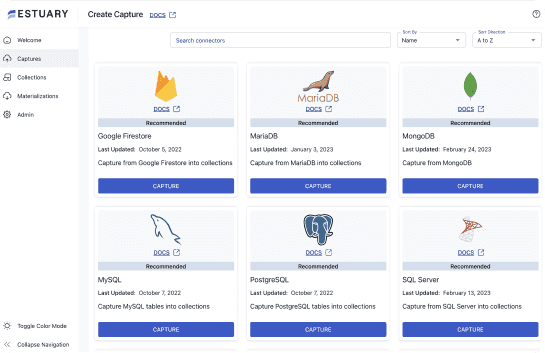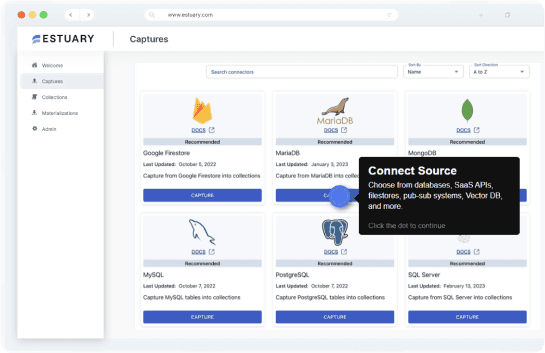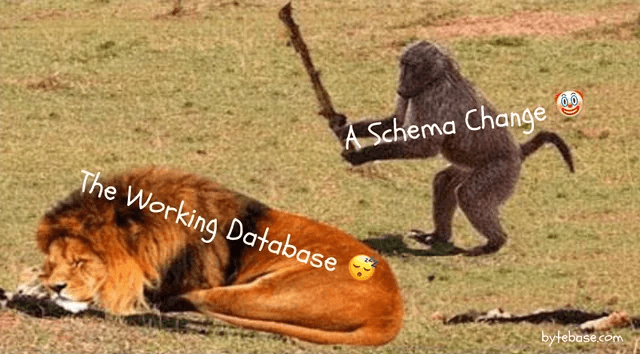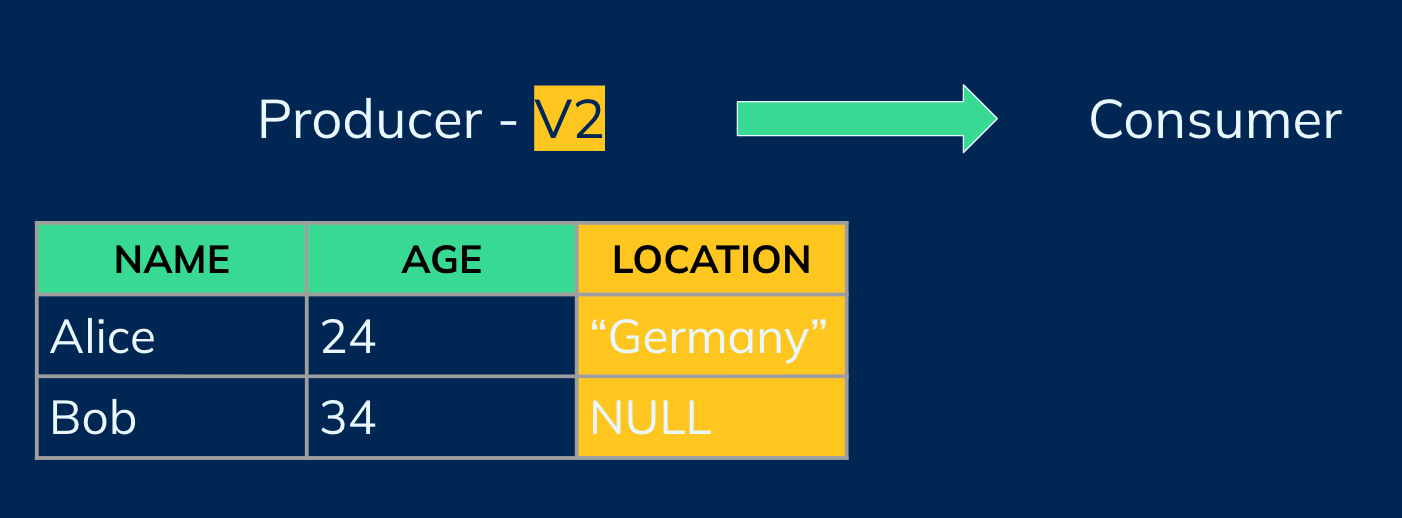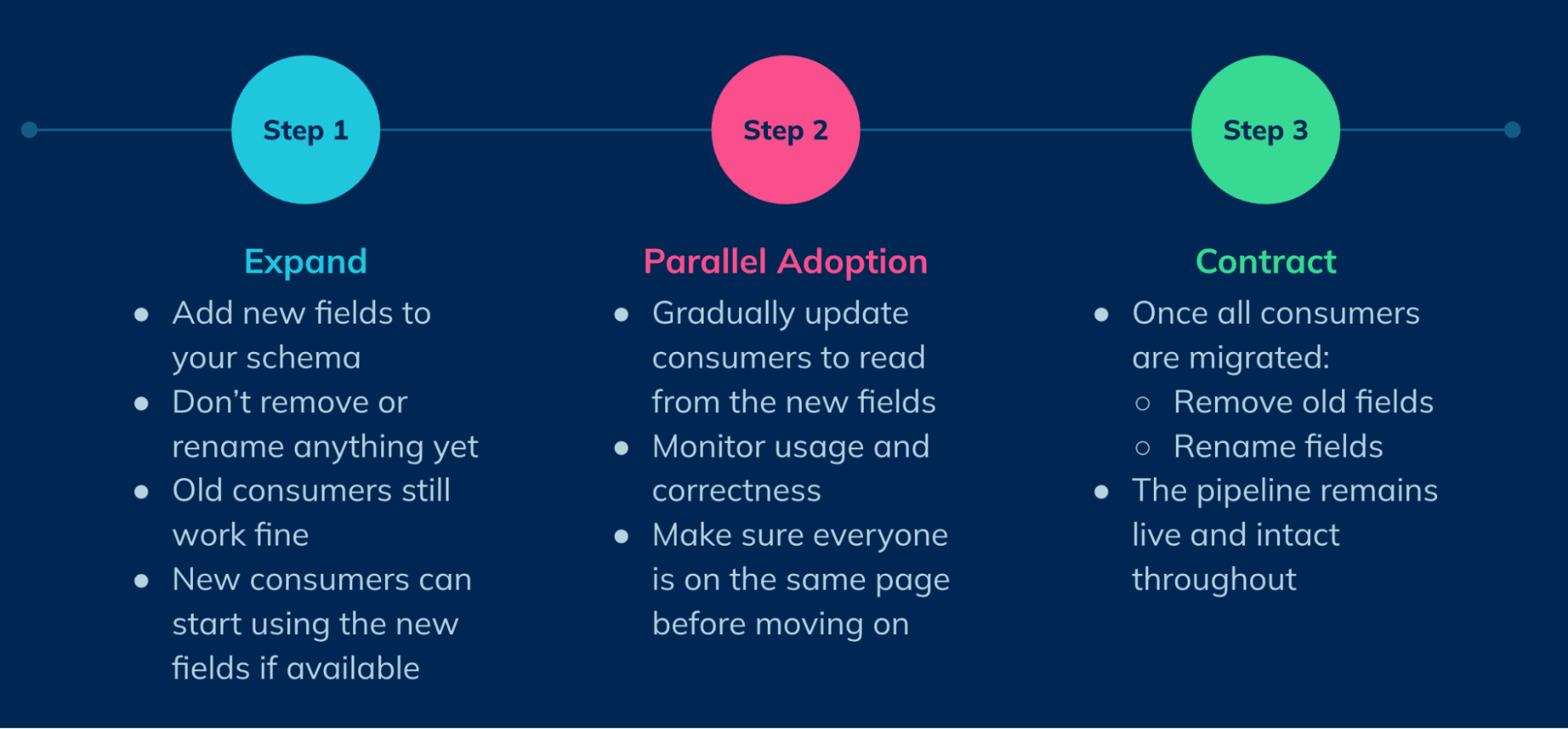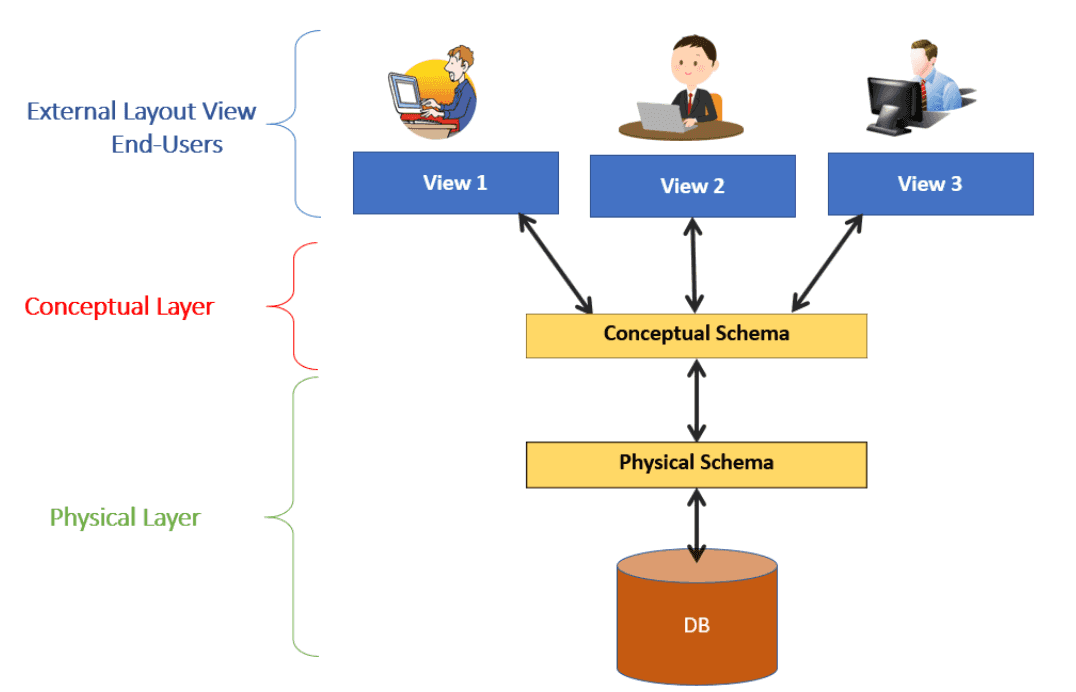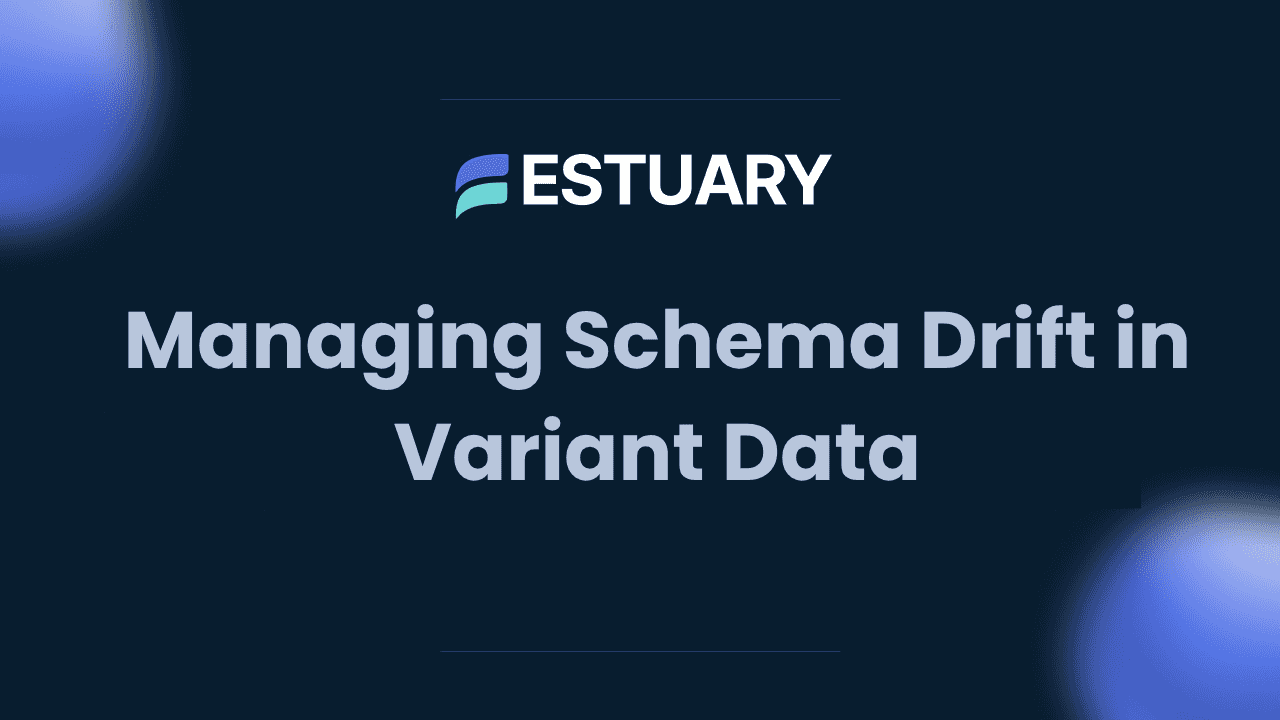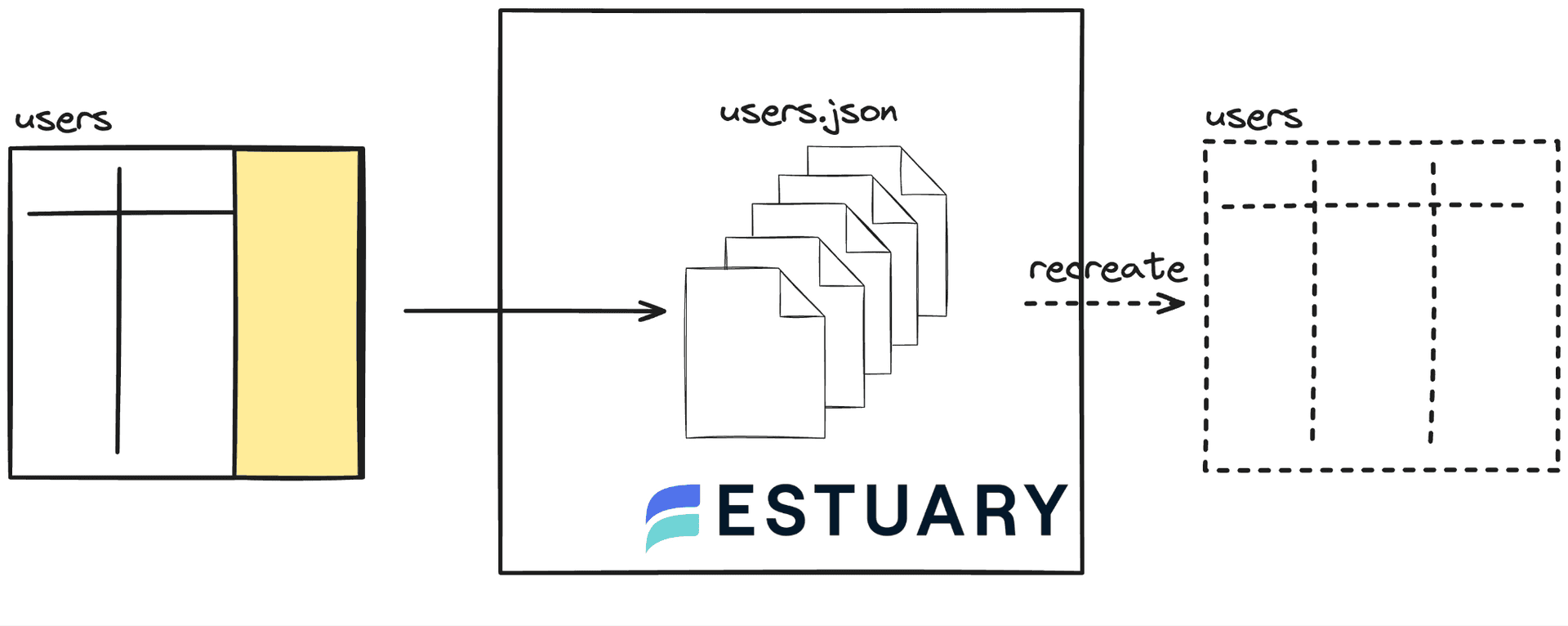
Schema Evolution in Real-Time Systems: How to Keep Data Flowing Without Breaking Everything
Learn how to handle schema changes in real-time data systems without breaking pipelines. Practical guide covering compatibility patterns, expand-contract strategy, schema registries, and real-world examples with code.
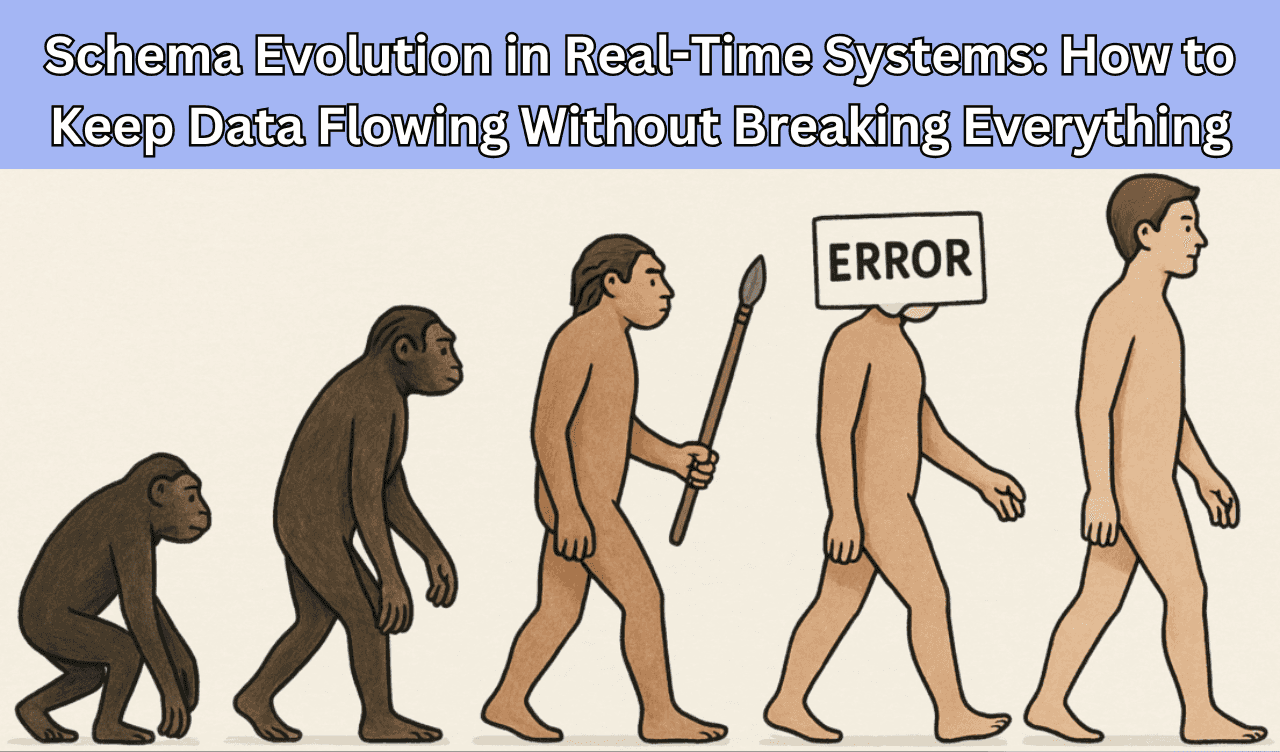
In real-time data systems, schemas aren't just technical details but contracts. They define how data is structured, how it moves, and how it's understood by every system and person downstream.
And here's the catch: schemas will never stop changing.
Schema evolution is one of the most complex parts of real-time systems. Without it, pipelines break, dashboards fail, and downstream consumers lose trust. New fields get added. Types are updated. Old columns are dropped. Each can feel small and reasonable until a dashboard breaks, stakeholders panic, and trust in your data takes a nosedive.
So, how do we keep real-time systems resilient in constant change? That's where schema evolution comes in.
When Schemas Break: A Real-World Scenario
Imagine you're responsible for a live data pipeline feeding critical analytics dashboards across your organization. One morning, a schema change slipped through; maybe someone renamed a column in the source database from customer_id to customerId.
Within seconds:
- Dashboards fail because they're looking for a field that no longer exists
- Support tickets flood in from confused business users
- Everyone's pointing fingers at data engineering
Real-time systems are fragile because you can't just "retry yesterday's data." Once bad data flows through, it propagates instantly. Fixing problems is far more complicated than preventing them.
The takeaway: We need to build pipelines that expect change, not fear it.
What Is Schema Evolution and Why Does It Matter?
At its core, schema evolution is about safely adapting your data's structure over time. In batch systems, you might pause and adjust. In real-time systems, downtime isn't an option; errors spread too quickly.
Schema Evolution Examples: Common Changes and Their Impact
Let's look at typical changes and what happens without proper evolution:
1. Adding a Field
plaintext// Before
{"user_id": 123, "name": "Alice"}
// After
{"user_id": 123, "name": "Alice", "email": "alice@example.com"}Impact: Old consumers crash when they encounter unexpected fields.
2. Changing Field Types
plaintext// Before
{"price": "19.99"} // String
// After
{"price": 19.99} // NumberImpact: Type mismatches cause parsing failures downstream.
3. Renaming Fields
plaintext// Before
{"customer_name": "Bob"}
// After
{"customerName": "Bob"}Impact: Queries fail, dashboards break, APIs return null values.
4. Removing Fields
plaintext// Before
{"id": 1, "deprecated_field": "old_value", "active": true}
// After
{"id": 1, "active": true}Impact: Systems expecting the old field throw errors.
That's why schema evolution ensures:
- Adaptability to new business requirements
- Compatibility with historical data
- Continuity of real-time operations
The Mission: Compatibility
Schema evolution relies on maintaining forward, backward, or full compatibility so systems remain resilient to change. The north star of schema evolution is compatibility. The goal is simple: systems should keep working as schemas change. That means old and new versions of data need to coexist.
The Three Types of Compatibility
1. Forward Compatibility
Old consumers can handle new data, ignoring fields they don't understand.
plaintext// Consumer expects v1
{"user_id": 123, "name": "Alice"}
// But receives v2 (with extra field)
{"user_id": 123, "name": "Alice", "email": "alice@example.com"}
// Result: Consumer ignores "email" and continues working2. Backward Compatibility
New consumers can still process older data without failing.
plaintext// Consumer expects v2
{"user_id": 123, "name": "Alice", "email": "alice@example.com"}
// But receives v1 (missing email)
{"user_id": 123, "name": "Alice"}
// Result: Consumer uses default value for missing "email"3. Full Compatibility
Both directions work, ensuring any producer can talk to any consumer.
This isn't just theory; it prevents production environments from having fire drills.
Patterns & Strategies for Zero-Downtime Evolution
Managing schema evolution in real-time systems isn’t just about avoiding breakage; it’s about planning changes to keep data pipelines flowing without interruption.
1. The Expand-Contract Pattern
This is the golden rule of schema evolution. Never break things! Evolve them gradually.
Step 1: Expand
plaintext-- Original table
CREATE TABLE users (
id INT,
customer_name VARCHAR(100)
);
-- Add new column without removing old one
ALTER TABLE users ADD COLUMN name VARCHAR(100);
-- Copy data to new column
UPDATE users SET name = customer_name;Step 2: Migrate Update all consumers to read from the new name field instead of customer_name.
Step 3: Contract
plaintext-- Only after all consumers are updated
ALTER TABLE users DROP COLUMN customer_name;2. Schema Registries: Your Safety Net
A schema registry acts as a central authority for schema versions. Think of it as version control for your data structures.
Example with Apache Kafka and Confluent Schema Registry:
pythonfrom confluent_kafka import avro
from confluent_kafka.avro import AvroProducer
# Define schema
value_schema_str = """
{
"namespace": "customer.avro",
"type": "record",
"name": "Customer",
"fields": [
{"name": "id", "type": "int"},
{"name": "name", "type": "string"},
{"name": "email", "type": ["null", "string"], "default": null}
]
}
"""
# Registry validates compatibility before allowing changes
producer = AvroProducer({
'bootstrap.servers': 'localhost:9092',
'schema.registry.url': 'http://localhost:8081'
}, default_value_schema=value_schema_str)The registry will:
- Store all schema versions
- Validate new schemas against compatibility rules
- Reject breaking changes automatically
3. Automated Schema Discovery
Instead of manually tracking changes, let systems discover them:
Example with Apache Spark:
python# Spark can infer schema from JSON files
df = spark.read.option("multiLine", "true").json("path/to/data/*.json")
# Enable schema merge to handle evolution
df = spark.read.option("mergeSchema", "true").parquet("path/to/data/")
# View the evolved schema
df.printSchema()4. Default Values and Optional Fields
Make new fields optional with sensible defaults:
Protocol Buffers Example:
plaintextmessage Customer {
int32 id = 1;
string name = 2;
// New field with default - won't break old consumers
optional string email = 3 [default = "unknown@example.com"];
// Enum with default for future expansion
enum Status {
UNKNOWN = 0; // Always include unknown as 0
ACTIVE = 1;
INACTIVE = 2;
}
Status status = 4 [default = UNKNOWN];
}Schema Evolution in Practice: Real-World Examples
To understand schema evolution in practice, let’s look at real-world examples where evolving schemas safely keeps critical systems online and users unaffected.
Example 1: E-commerce Order Processing
Scenario: Adding a discount_code field to order events.
python# Version 1: Original schema
order_v1 = {
"order_id": "ORD-123",
"customer_id": "CUST-456",
"total": 99.99,
"items": [...]
}
# Version 2: With discount tracking
order_v2 = {
"order_id": "ORD-123",
"customer_id": "CUST-456",
"total": 99.99,
"items": [...],
"discount_code": "SUMMER20", # New field
"original_total": 124.99 # New field
}
# Consumer code that handles both versions
def process_order(order):
discount = 0
if "original_total" in order and "discount_code" in order:
discount = order["original_total"] - order["total"]
log_discount_usage(order["discount_code"], discount)
# Core logic continues to work
process_payment(order["order_id"], order["total"])Example 2: User Profile Evolution
Scenario: Splitting a full_name field into first_name and last_name.
python# Transition strategy
class UserProfile:
def __init__(self, data):
self.data = data
@property
def first_name(self):
# Try new field first
if "first_name" in self.data:
return self.data["first_name"]
# Fall back to parsing old field
elif "full_name" in self.data:
return self.data["full_name"].split()[0]
return ""
@property
def last_name(self):
if "last_name" in self.data:
return self.data["last_name"]
elif "full_name" in self.data:
parts = self.data["full_name"].split()
return parts[-1] if len(parts) > 1 else ""
return ""Example 3: CDC (Change Data Capture) with Schema Evolution
When capturing database changes in real-time:
python-- Original table
CREATE TABLE products (
id INT PRIMARY KEY,
name VARCHAR(100),
price DECIMAL(10,2)
);
-- Schema evolves
ALTER TABLE products
ADD COLUMN category VARCHAR(50) DEFAULT 'uncategorized',
ADD COLUMN last_updated TIMESTAMP DEFAULT CURRENT_TIMESTAMP;
-- CDC event includes schema version
{
"schema_version": "1.2",
"operation": "UPDATE",
"table": "products",
"data": {
"id": 123,
"name": "Widget Pro",
"price": 29.99,
"category": "electronics",
"last_updated": "2024-01-15T10:30:00Z"
},
"before": {
"id": 123,
"name": "Widget",
"price": 24.99
// Old records don't have new fields
}
}Estuary's Approach: Built-in Schema Evolution
A CRM system may add a new column for “customer_segment,” an e-commerce app might change how it tracks “delivery_date,” or an inventory database might start using a new key. In most real-time systems, these changes can cause errors or break pipelines. Estuary Flow is built to handle schema evolution gracefully, so your data keeps moving without surprises.
Adding New Fields
Imagine your inventory system adds a new description field to product records. In Estuary, this doesn’t have to mean hours of rework. If your materializations use recommended fields (the default), the new column is automatically added to destinations like Snowflake or BigQuery. That means when your team starts writing richer product descriptions, they’ll flow downstream without extra effort.
If you prefer tight control, you can disable recommended fields and manually include only what you want. For example, maybe your warehouse team doesn’t need description, so you leave it out. Either way, Flow ensures the rest of the pipeline keeps running.
Changing Field Types
Let’s say the description field changes from a simple string to something more complex, like a JSON object with multiple attributes. In many systems, this would trigger an error. With Flow, the platform validates the change against your schema and lets you decide how to move forward. If the new type is compatible (for example, allowing both strings and objects), you can bump the backfill counter and refresh your destination table. If not, Flow will prompt you to materialize into a new table, keeping your existing jobs stable while you adapt.
Removing Fields
Sometimes a field becomes unnecessary. For instance, you might stop tracking warehouse_location if it’s irrelevant. Flow handles this cleanly: downstream databases won’t break. The old column remains in place but is simply ignored in future materializations. No downtime, no lost data.
Re-Creating Collections
Some changes go deeper, like changing the primary key of a collection or its partitioning logic. These cannot be applied directly. For example, maybe your sales orders were originally keyed by order_id, but now you need them by combining order_id and customer_id. In this case, Flow guides you through creating a new collection and re-binding captures and materializations. You can backfill the new collection so your downstream data stores, like Snowflake or BigQuery, are rebuilt with the updated structure.
Automatic Evolution with AutoDiscover
For teams that want schema evolution to “just work,” Flow provides AutoDiscover. With this enabled, Flow can automatically detect and apply schema changes. For example, if a new field is added to your Postgres source table, Flow can re-version the collection and update downstream materializations without manual intervention. This keeps your pipelines resilient even when source systems evolve unexpectedly.
Schema Evolution Best Practices Checklist
Schema evolution can get messy fast, but following these best practices helps teams minimize risk and keep systems resilient to change.
✅ DO:
- Use semantic versioning for schema evolution (1.0.0, 1.1.0, 2.0.0)
- Make new fields optional with defaults
- Test schema changes in staging first
- Document why fields are added/removed
- Monitor schema registry for compatibility violations
- Keep a schema changelog
❌ DON'T:
- Rename fields without the expand-contract pattern
- Change field types without migration
- Remove fields that downstream systems depend on
- Deploy schema changes without validation
- Ignore backward compatibility during schema evolution planning
- Trust that "small changes" won't break anything
Key Takeaways
Schema evolution isn't optional in real-time systems; it's mission-critical. To succeed:
- Evolve schemas intentionally, not reactively. Plan changes, don't scramble to fix them.
- Use proven patterns like Expand-Contract and Schema Registries. They exist because they work.
- Lean on platforms with built-in schema compatibility support. Don't reinvent the wheel.
- Make compatibility your default. Every schema change should be backward and forward compatible.
- Automate validation. Humans make mistakes; let machines catch them before production.
Change is inevitable. Breakage doesn't have to be. With platforms like Estuary Flow, schema evolution is bbuilt in keeping your data pipelines resilient and uninterrupted.
Ready to implement bulletproof schema evolution in your real-time data pipelines? Learn more about Estuary Flow and how we handle schema changes automatically.
FAQs
How do you handle breaking schema changes without downtime?
Why is schema evolution important for real-time analytics and streaming pipelines?

About the author
Dani is a data professional with a rich background in data engineering and real-time data platforms. At Estuary, Daniel focuses on promoting cutting-edge streaming solutions, helping to bridge the gap between technical innovation and developer adoption. With deep expertise in cloud-native and streaming technologies, Dani has successfully supported startups and enterprises in building robust data solutions.

